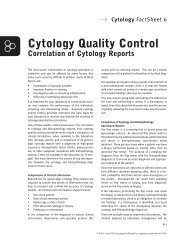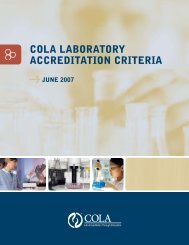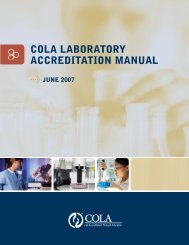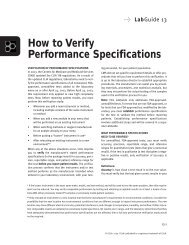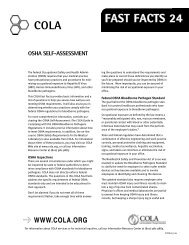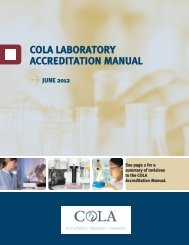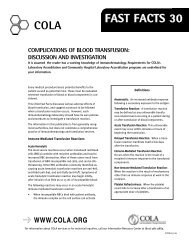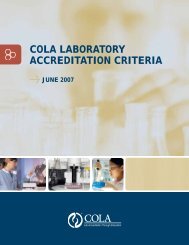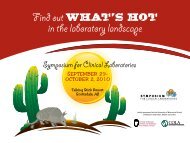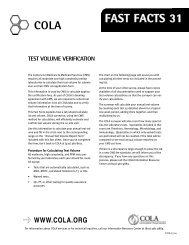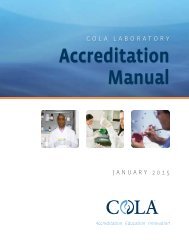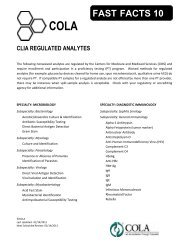Incident Management: Developing a Plan - COLA
Incident Management: Developing a Plan - COLA
Incident Management: Developing a Plan - COLA
You also want an ePaper? Increase the reach of your titles
YUMPU automatically turns print PDFs into web optimized ePapers that Google loves.
<strong>COLA</strong> LABGUIDE 71<br />
Table 2<br />
“TRUE (ROOT) CAUSE ANALYSIS”<br />
A simple “true (root) cause analysis” is performed by repeatedly asking “why.” Continuing to<br />
ask “why” at least five times will dig progressively deeper to reach the true underlying cause<br />
of the situation. During the study many contributing factors may be uncovered while striving<br />
to identify the true cause to the incident.<br />
A “true cause analysis” is the investigation into the causal factors that lead to the outcome<br />
of an event. Causal factors include equipment problems, control problems, environmental<br />
factors or human errors. Often a true cause analysis simply identifies these causal factors<br />
and makes recommendations to correct them. This may prevent the same event from<br />
recurring, but if the “true” cause is not addressed, the event is likely to repeat in the future.<br />
True causes are the weaknesses in the system that allows the causal factors to occur.<br />
Systems are the processes an organization has in place to ensure patient safety and to<br />
encourage personnel to take the appropriate actions and discourage them from taking<br />
inappropriate actions. The focus should be on the systems and processes, not individual<br />
performance. Examples include written procedures and instructions, maintenance and<br />
calibration, and standards and policies.<br />
The true cause analysis could be performed by mapping or flowcharting the events and<br />
circumstances surrounding the event. All causal factors, barriers, and system issues are<br />
identified with an indication of how each impacted the incident. Once all of the facts of case<br />
are known and the true cause is identified, a corrective action plan is developed and<br />
implemented. The final step is to follow-up within a determined amount of time to ensure that<br />
the corrective action plan is effective. All steps in the analysis must be thorough and credible.<br />
Resources (as of 5/03):<br />
1. QuIC: Understanding Medical Errors and Patient Safety Report of the Quality Interagency<br />
Coordinated Task Force, 2000 (www.guic.gov/report/errors6.pdf).<br />
2. “Sentinel Events Workbook – Health & Disability Sector to Learn from Mistakes”, Gillian Bohm,<br />
Senior Advisor Quality Improvement, Ministry of Health, New Zealand, September 2001<br />
(www.moh.govt.nz - under publications).<br />
3. Statewide Sentinel Event Reporting, Department of Human Services, Australia, 2002-2003<br />
(http://clinicalrisk.health.vic.gov.au/sentin.htm).<br />
4. Agency for Healthcare Research & Quality (AHRQ) - Medical Errors & Patient Safety<br />
(www.ahcpr.gov/qual/errorsix.htm).<br />
71-4<br />
© <strong>COLA</strong>--5/03. <strong>COLA</strong> LabGuide® is a registered trademark of <strong>COLA</strong>.<br />
The information in this LabGuide is based on sound laboratory practice--it does not necessarily reflect <strong>COLA</strong> accreditation criteria.




